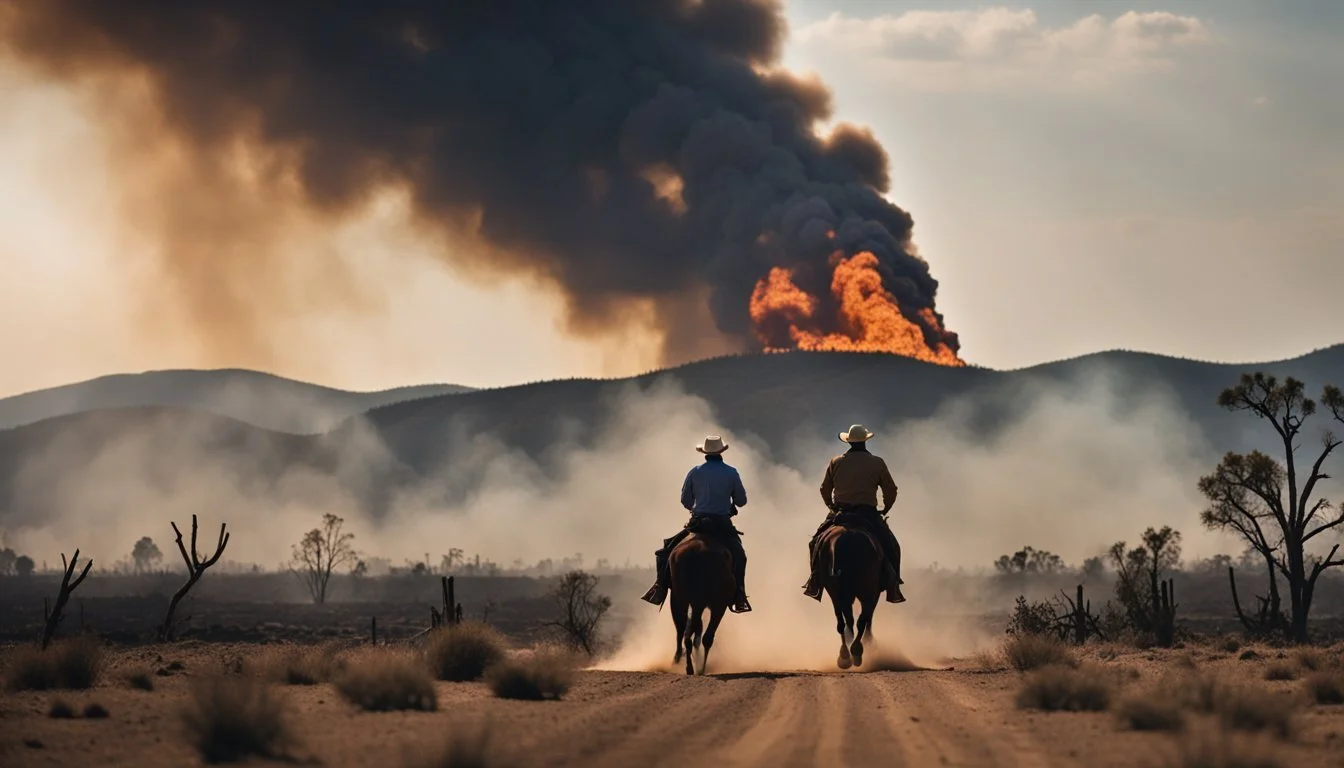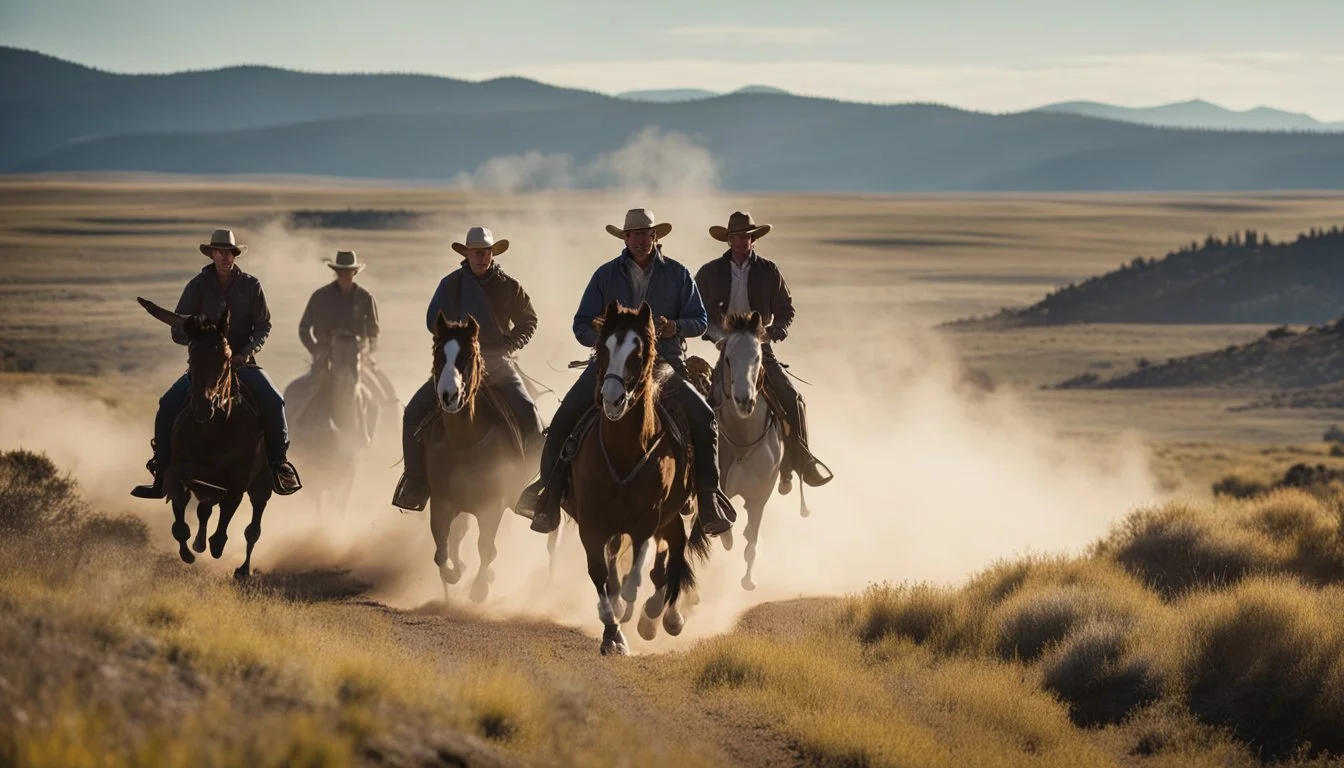Yellowstone Eruption Could Trigger Catastrophic Chaos and Destruction
Yellowstone National Park, a geological marvel, sits atop a vast supervolcano that has shaped the landscape for millions of years. While the park's geothermal features draw visitors from around the world, they also serve as a reminder of the powerful forces lurking beneath the surface.
The possibility of a major natural disaster at Yellowstone has long captured public imagination. A large-scale eruption of Yellowstone's supervolcano would devastate the surrounding states with ash fall and cause widespread climate impacts across North America and beyond. However, geologists emphasize that such a cataclysmic event is extremely unlikely in the near future.
More probable scenarios for natural disasters at Yellowstone include smaller-scale volcanic activity, earthquakes, or changes to the park's hydrothermal systems. These events could still pose significant risks to visitors and nearby communities. Understanding the potential hazards helps inform disaster preparedness efforts in the region.
Understanding Yellowstone's Volcanic Nature
Yellowstone National Park sits atop a complex and powerful volcanic system. This unique geological feature shapes the landscape and creates the park's famous geothermal attractions.
The Yellowstone Caldera
The Yellowstone Caldera is a massive volcanic crater formed by past eruptions. It spans approximately 30 miles by 45 miles, covering a significant portion of the park. The caldera resulted from three major eruptions over the last 2.1 million years.
These eruptions ejected enormous volumes of ash and rock, leaving behind the distinctive bowl-shaped depression. The most recent major eruption occurred about 640,000 years ago.
Today, the caldera continues to exhibit signs of volcanic activity. Magma beneath the surface heats groundwater, creating the park's famous geysers and hot springs.
Supervolcano: Myths and Realities
Yellowstone is often referred to as a supervolcano due to its potential for large-scale eruptions. While this term can spark fear, it's important to understand the realities of Yellowstone's volcanic nature.
The risk of an imminent, catastrophic eruption is low. The Yellowstone Volcano Observatory closely monitors the area for any signs of increased activity.
Smaller eruptions or hydrothermal explosions are more likely than a full-scale supervolcanic event. These could still pose local hazards but would not have the global impact often depicted in popular media.
Scientists estimate that the probability of a major eruption in any given year is around 1 in 730,000.
Hydrothermal Activity and Geysers
Yellowstone's hydrothermal features are the most visible signs of its volcanic nature. The park boasts over 10,000 geothermal features, including geysers, hot springs, mudpots, and fumaroles.
Old Faithful, the park's most famous geyser, erupts roughly every 90 minutes. It showcases the power of Yellowstone's underground heat and pressure.
Mudpots form when hot water mixes with volcanic ash and clay. These bubbling pools of mud demonstrate the ongoing interaction between heat, water, and rock beneath the surface.
While beautiful, these features can be dangerous. Visitors must stay on designated boardwalks to avoid injury from scalding water or unstable ground.
The Role of Climate Change in Natural Disasters
Climate change is altering environmental conditions in Yellowstone National Park, influencing the frequency and intensity of natural disasters. Rising temperatures and shifting precipitation patterns are reshaping the park's ecosystems and geological processes.
Effects on Weather Patterns
Climate change is amplifying extreme weather events in Yellowstone. Warmer temperatures are leading to more intense rainfall and earlier snowmelt. This combination increases the risk of flash floods and landslides.
Droughts are becoming more frequent and severe. Extended dry periods heighten the danger of wildfires, threatening both flora and fauna. The park's iconic forests face greater vulnerability to insect infestations and disease outbreaks.
Winter snowpack is diminishing, affecting water availability throughout the year. This change impacts rivers, streams, and wetlands, crucial habitats for many species.
Impact on Hydrothermal Systems
Yellowstone's famous geothermal features are not immune to climate change. Altered precipitation patterns and groundwater levels can affect the behavior of geysers, hot springs, and fumaroles.
Rising temperatures may increase the frequency of hydrothermal explosions. These events occur when underground water pressure suddenly drops, causing rapid steam expansion. Such explosions can create new thermal features or alter existing ones.
Climate change could also influence the microbial communities in hot springs. These unique ecosystems may shift or disappear as conditions change, potentially impacting the park's biodiversity.
Human-induced climate change interacts with Yellowstone's natural geologic cycles, creating a complex and dynamic environment. Understanding these interactions is crucial for predicting and managing future natural disasters in the park.
Historical Perspective on Yellowstone Disasters
Yellowstone National Park has experienced significant natural disasters throughout its history. These events have shaped the landscape and ecosystems of the park, while also impacting human activities and management strategies.
The June 2022 Historic Flood
In June 2022, Yellowstone faced unprecedented flooding. Heavy rainfall combined with rapid snowmelt led to record-breaking water levels in rivers and streams. The Yellowstone River reached its highest recorded level, causing severe damage to roads, bridges, and buildings.
The flood forced park closures and evacuations. It washed away sections of the North Entrance Road and damaged wastewater treatment facilities. The U.S. Geological Survey reported that some areas experienced a 1-in-500-year flood event.
Recovery efforts focused on rebuilding infrastructure and restoring access to the park. The flood highlighted the need for improved disaster preparedness and climate change adaptation strategies in national parks.
Past Eruption Events
Yellowstone's volcanic history includes three massive caldera-forming eruptions over the past 2.1 million years. The most recent occurred approximately 631,000 years ago, ejecting 240 cubic miles of material and forming the current Yellowstone Caldera.
Smaller eruptions have occurred more recently:
174,000 years ago: West Thumb Geyser Basin formed
70,000 years ago: Eruption near Yellowstone Lake's north shore
These events shaped Yellowstone's iconic features, including its geothermal areas and unique ecosystems. While a future supereruption is extremely unlikely in human timescales, the U.S. Geological Survey continues to monitor volcanic activity in the park.
Predicting and Monitoring Disaster Risks
Scientists use advanced techniques to assess potential hazards at Yellowstone. These methods help track seismic activity and volcanic indicators to provide early warnings of possible disasters.
Earthquake Activity and Indicators
The USGS constantly monitors Yellowstone for earthquake activity. Seismometers detect ground vibrations, helping scientists identify patterns that may signal increased risk.
Frequent small tremors are normal in the area. However, an uptick in quantity or magnitude could indicate rising magma or tectonic shifts.
GPS stations measure ground deformation. Uplift or subsidence may reveal changes in underground pressure. This data, combined with seismic information, provides a clearer picture of subsurface activity.
Monitoring Volcanic Activity
Yellowstone's volcanic system requires specialized monitoring. Gas emissions offer valuable insights into magmatic processes.
Scientists analyze ratios of gases like carbon dioxide and hydrogen sulfide. Changes can indicate magma movement or increased hydrothermal activity.
Temperature and chemical composition of hot springs and geysers are regularly checked. Alterations may signal shifts in the underlying volcanic system.
Remote sensing technologies, including satellite imagery, help track surface changes. These tools can detect heat anomalies or ground deformation over large areas.
Together, these monitoring methods allow experts to assess Yellowstone's volcanic state and potential risks.
Disaster's Impact on Ecology and Tourism
A major natural disaster in Yellowstone would drastically alter the park's ecology and tourism industry. The effects would ripple through wildlife populations, vegetation, and local economies.
Effects on Flora and Fauna
A disaster like severe flooding or seismic activity would damage crucial habitats. Old-growth forests could be uprooted or buried, destroying homes for birds and small mammals. Erosion might wash away riverside vegetation, impacting species like beavers and otters.
Large mammals such as bison, elk, and bears would face food shortages as grazing lands become inundated or altered. Fish populations could plummet if spawning grounds are destroyed or water chemistry changes abruptly.
Some opportunistic species might thrive in the aftermath. Certain plants could colonize newly exposed soil. Scavengers like ravens and coyotes may find temporary abundance in carrion.
Economic Consequence for Local Communities
Towns like Gardiner and Cooke City rely heavily on Yellowstone tourism. A major disaster would likely force park closures, devastating local businesses. Hotels, restaurants, and tour operators could face months or years of reduced income.
Park infrastructure damage would require costly repairs. Roads, bridges, and visitor centers might need complete rebuilding, straining budgets and delaying reopening.
Long-term visitation could drop if iconic features are permanently altered. The loss of geysers, hot springs, or scenic vistas would reduce the park's appeal to some tourists.
Recovery efforts could provide temporary employment in construction and restoration work. However, the overall economic impact on gateway communities would be severely negative for an extended period.
Emergency Response and Recovery Efforts
Yellowstone's emergency response and recovery efforts focused on rapid search and rescue missions, followed by extensive rebuilding of damaged infrastructure. Officials prioritized visitor safety while working to restore access to the park's iconic landscapes.
Search and Rescue Missions
Park rangers and emergency personnel sprang into action as floodwaters rose. Helicopters airlifted stranded visitors from backcountry areas. Ground teams conducted sweeps of campgrounds and trails to locate missing hikers.
Swift water rescue units deployed to save people trapped by rising rivers. Emergency shelters were established in nearby communities to house evacuated visitors and staff.
Communication systems were quickly restored to coordinate rescue efforts. Park officials worked closely with local, state, and federal agencies to ensure a comprehensive response.
Rebuilding and Rehabilitation
Flood damage to roads and buildings was extensive, particularly near the North Entrance. Crews worked tirelessly to repair washed-out sections of the North Entrance Road. Temporary bridges were installed to restore access to cut-off areas.
Engineers assessed structural damage to visitor centers, lodges, and employee housing. Repairs focused on flood-proofing buildings to better withstand future events.
Trails and boardwalks required significant rehabilitation. Crews cleared debris, rebuilt eroded sections, and reinforced vulnerable areas.
Water and sewage systems were priority repair targets. Temporary facilities were set up while permanent infrastructure was rebuilt to higher flood-resistance standards.
Future Preparedness and Mitigation Strategies
Yellowstone National Park faces unique challenges in preparing for potential natural disasters. Enhancing visitor safety and protecting park resources require innovative approaches to reservation systems and infrastructure resilience.
Updating the Reservation System
A modernized reservation system would play a crucial role in managing visitor flow during emergencies. Real-time monitoring of geologic activity could trigger automatic adjustments to park access. This system would limit entries to safer areas and redirect visitors away from high-risk zones.
Digital alerts would keep visitors informed about potential hazards like mudslides, rockslides, or hydrothermal explosions. The system could also facilitate swift evacuations by providing clear instructions and escape routes.
Implementing a flexible cancellation policy would encourage visitors to postpone trips during periods of elevated risk. This approach would reduce the number of people in harm's way if a disaster were to occur.
Infrastructure and Community Resilience
Reinforcing park infrastructure is essential for withstanding natural disasters. Buildings and roads would be constructed or retrofitted to resist damage from earthquakes, mudslides, and floodwaters.
Key measures include:
Elevated structures in flood-prone areas
Reinforced roofs to withstand heavy ash fall
Improved drainage systems to channel mudflows
Emergency shelters would be strategically placed throughout the park, equipped with supplies and communication devices. These shelters would serve as safe havens during evacuations.
Partnerships with surrounding communities would strengthen regional preparedness. Coordinated response plans and shared resources would enhance the park's ability to manage large-scale disasters effectively.
Enhancing Public Education and Awareness
Effective public education and awareness strategies are crucial for preparing visitors and local communities for potential natural disasters in Yellowstone National Park. These efforts focus on information dissemination and community engagement to enhance safety and readiness.
Information Dissemination
Park rangers and staff distribute informational brochures and pamphlets to visitors upon entry to Yellowstone. These materials outline potential hazards, emergency procedures, and evacuation routes. Digital displays at visitor centers provide real-time updates on park conditions and any developing situations.
The park's website and mobile app feature a dedicated safety section with interactive maps, videos, and guides on disaster preparedness. Social media channels are utilized to share timely alerts and safety tips.
Multilingual signage is placed strategically throughout the park, highlighting geothermal areas, wildlife safety zones, and emergency assembly points.
Community Engagement and Safety Drills
Yellowstone collaborates with surrounding communities to conduct regular disaster preparedness workshops. These sessions educate locals on the park's unique hazards and proper response protocols.
Seasonal safety fairs are organized in gateway towns, featuring demonstrations by park rangers and local emergency responders. Attendees participate in hands-on activities to learn critical skills like first aid and proper use of emergency equipment.
The park coordinates with local schools to implement a Junior Ranger Disaster Preparedness program. This initiative teaches children about natural hazards and basic safety measures through engaging activities and field trips.
Annual emergency evacuation drills are conducted, involving park staff, visitors, and local residents. These exercises simulate various disaster scenarios to test and improve response capabilities.





